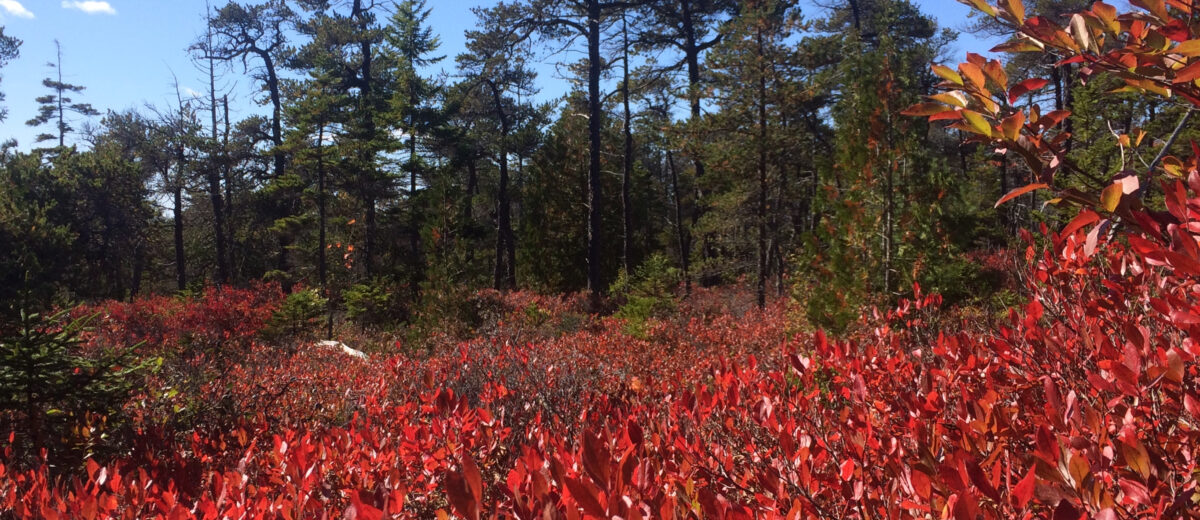story + photos by Catherine Schmitt
Some day not too long ago, the chitter of swifts and the ring of cicadas gave way to crickets and the rustle of dying leaves. Suddenly, it seems, the sun is lower in the sky, the rains have arrived, and leaves are starting to change color. Astronomically, summer ends and fall arrives at 9:04 p.m tonight, but it’s hard to pinpoint the moment here on Earth. What day was it when the last cicada sang or the first cricket chirped?
Amid the distractions of school and sports, the work of preparing for winter (stacking firewood, processing and storing food, battening hatches), there is less attention for tracking phenology, the timing of events in the lives of plants, animals, and fungi. Following phenology is as old as humanity, but now, studying the seasons has taken on greater urgency as an indicator of how a changing global climate is influencing Acadia.
Fall has been called “the neglected season” among phenology researchers, who tend to focus on Spring, with its bursting buds, unfurling fronds, and blooming flowers. Spring brings the excitement of bumble bees, the crescendo of frogs, the dazzle of warblers that seem to arrive just in time.
Fall is more nuanced. Now, the warblers are muted in feather and song. They fade into the still-green leaves, and will soon depart for warmer climates, and the leaves themselves will dazzle as they turn a thousand shades of red, orange, and yellow.
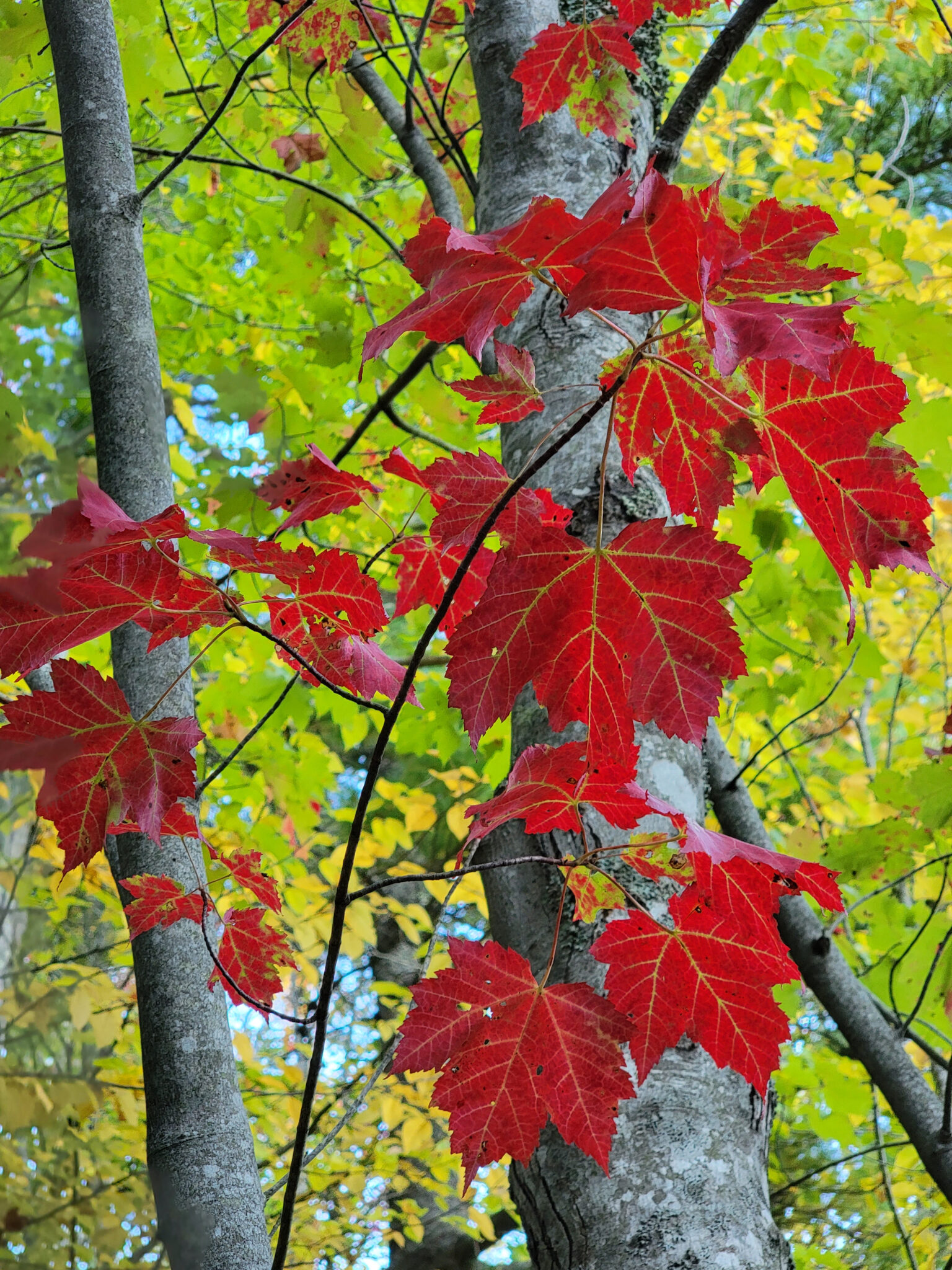
The timing of “peak foliage” is perhaps the most prominent autumnal event, the focus of news reports, travel plans, and regional identity. But even this is hard to measure, according to Dr. Stephanie Spera of the University of Richmond. Spera, a Second Century Stewardship Fellow, has been researching how the timing of “peak” fall foliage in Acadia has changed as the climate has warmed.
In reviewing more than 50 historical references to fall foliage from park reports, local newspapers, and old photographs, Spera found that peak color is now about a week later than it was in the 1950s. The prime colors that once occurred the first weekend in October now happen during the second weekend, which also happens to be the Indigenous Peoples Day holiday weekend, one of the most popular times to visit Acadia.
Though shorter days are partly responsible for signaling leaves to stop producing the chlorophyll that gives them their green tint, temperature and summer precipitation are also factors. “According to my preliminary analysis, the strongest influence on foliage timing is September temperatures, especially the number of cool nights, which are fewer,” she said during a recent visit to Cadillac Mountain to check on the leaves. “Every 1.8 °F increase in temperature corresponds to a 2.6 day shift in peak foliage color.”
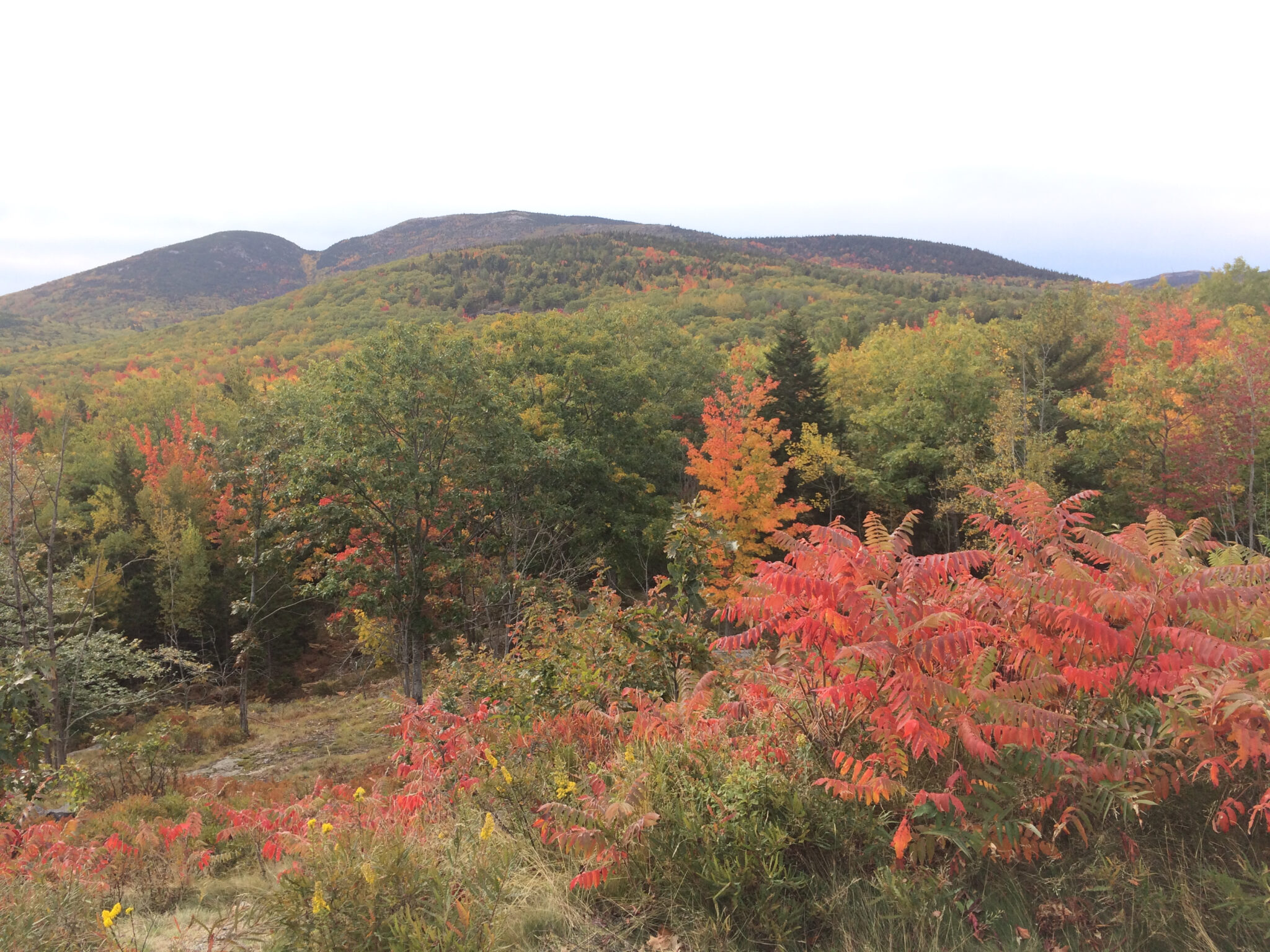
Different trees vary in their response to seasonal cues, and as the kinds of trees in Acadia change, so will the synchrony of fall color, said Spera. “I think everything is just more unpredictable.”
Certainly, it’s hard to predict when the first frost will arrive. The U.S. Department of Agriculture uses daily minimum temperatures of 32 to 25 degrees to signal frost and the end of the growing season. Recent University of Maine graduate student Carly Frank, working with Maine State Climatologist Sean Birkel, examined growing season length since 1981 for all three Maine climate divisions. Her analysis shows a 2-3 week increase for the Coastal Climate Division that includes Acadia. The later frosts can be attributed to both warmer weather patterns and warmer sea surface temperatures in September and October, according to Birkel.
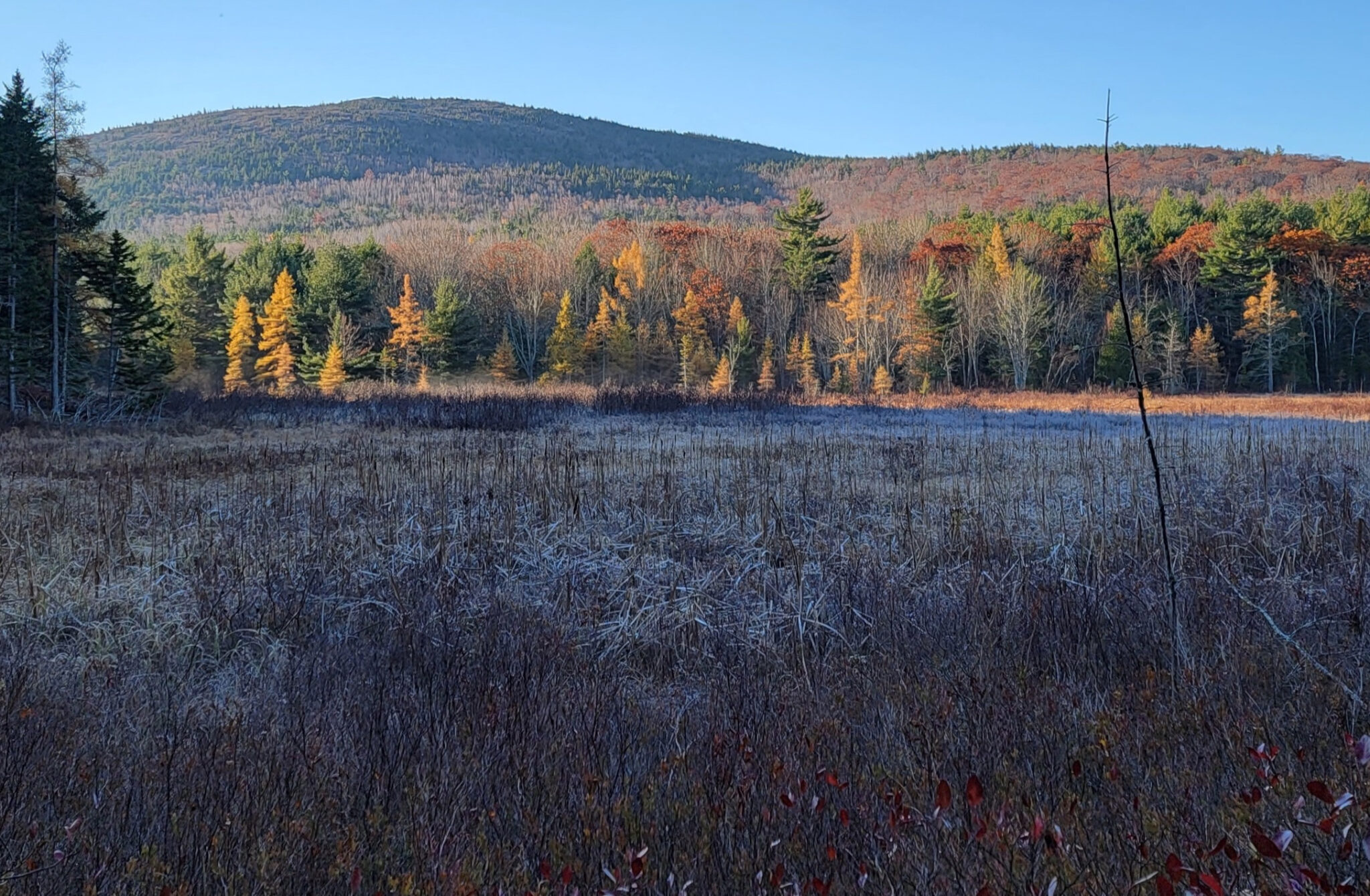
The sea, still holding onto summer’s warmth, expands just a little bit more, contributing to the higher high tides that tend to occur this time of year. These “king tides” arrive in late October, November, and December, during full and new phases of the moon, which is also closest to Earth in its elliptical orbit, its gravitational pull stronger. King tides on their own can cause minor flooding problems, but carry greater potential risk if a storm occurs at the same time. Fall also marks the shift from hurricane season to Nor’easter season in Acadia.
The winds have shifted. Up on Cadillac Mountain, the hawk watchers are scanning the air for birds in flight, binoculars trained on the Porcupine Islands and Schoodic Point in the distance. The hawks, too, have been unpredictable this year, coming later in the day, or else navigating fog and strong winds. Monarchs, dragonflies, and hummingbirds flutter through the crowd on their own migrations. Down below, out on the flats, sandpipers and plovers are frantically feeding.
Come November, Sea Watch observers will count the last of the sea birds migrating past Schoodic Point, gulls will begin dropping mussel shells on the Frazer Creek bridge, the king tides will rise, and everyone here will know that winter isn’t be far behind.
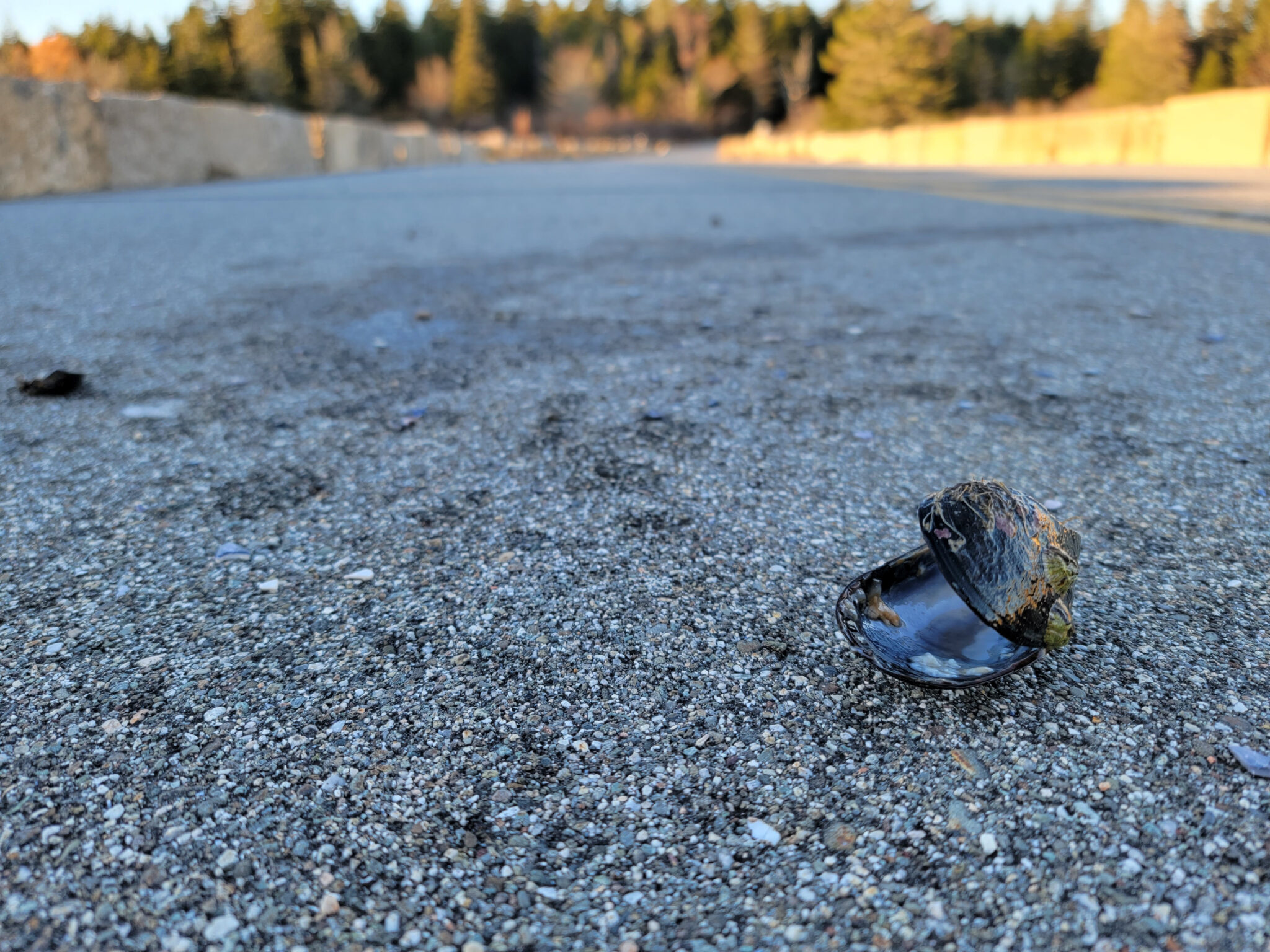
Dr. Spera will be presenting her research on October 18 as part of the Acadia National Park Science Symposium.
Help us track the season by submitting observations of birds, bees, monarch butterflies, goldenrod, shrubs (mountain ash, winterberry, huckleberry, three-toothed cinquefoil, black crowberry), and trees (pine, spruce, birch, maple, hemlock) to the Landscape of Change and Schoodic Signals projects on iNaturalist. Submit your high tide photos via Anecdata.
